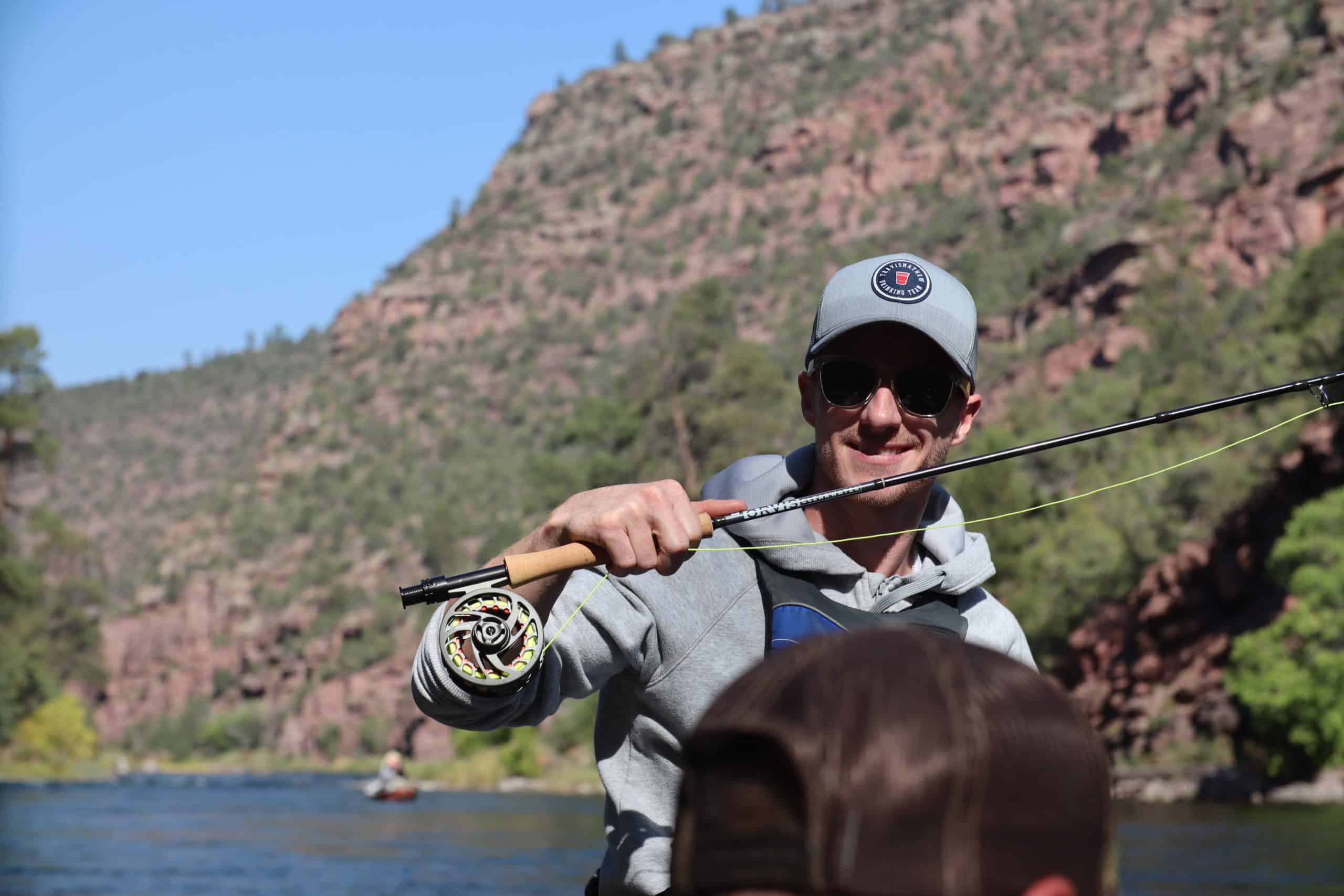Flaming Gorge Utah
If you love to fly fish, you have to add the Green River to your bucket list. Recently took a trip to the Flaming Gorge Utah area with a good friend. We enjoyed a couple of days float boating on the Green. The fishing was incredible. Even more incredible was the scenery. What a gorgeous place. There are three main sections to the river where the float boats generally operate. We were fortunate enough to be able to float all three. Hope you enjoy the photos.
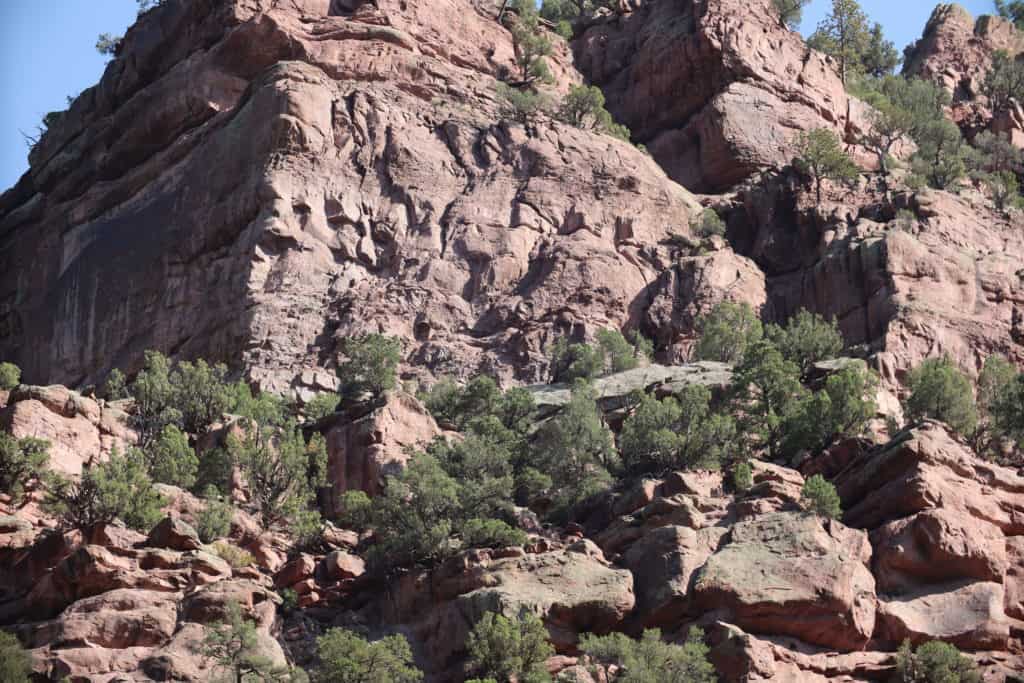

The Green River is one of the most iconic trout streams in North America. With over 15,000 fish per mile, this stream is one of the top fly fishing destinations for anglers from all across the United States. As mentioned earlier, there are three main sections to the Green River, with the A section beginning just below the Flaming Gorge Dam. Section A is easily the most popular of the three. There are more fish per mile in this section of the river than pretty much any other trout stream, this side of the San Juan River in New Mexico. There are lots of 20 inch browns and rainbows in the A section. You won’t have time to get bored floating this section. We didn’t get a bite on every cast, but many of our casts drew strikes. Be prepared for a fight. These fish are strong and they aren’t really interested in being netted.
There are some really big fish in this area. The largest brown trout caught in the state of Utah was over 29 pounds. That fish was caught just below Flaming Gorge Dam. The A section is absolutely breathtaking. It is hard to describe just how beautiful the canyon and river are through this section. Just breathtaking to say the least. Hopefully the photos I have included will give you some idea of what I am talking about. I can’t think of a more incredible place to fish.
The guide we were with set us up with a 3 fly rig for the A section. He used two grey nymphs and an egg. The pattern proved to be ultra productive. We caught fish all day long on the A section. Most of the trout we caught opted for the nymphs. A handful nudged the egg. We used a small strike indicator, positioned just below our end of our floating fly line. Best results came when we maintained a drag free drift with our flies. These fish are smart. You must present the fly so that it floats in a very natural way. If you do, you are in for a busy day.
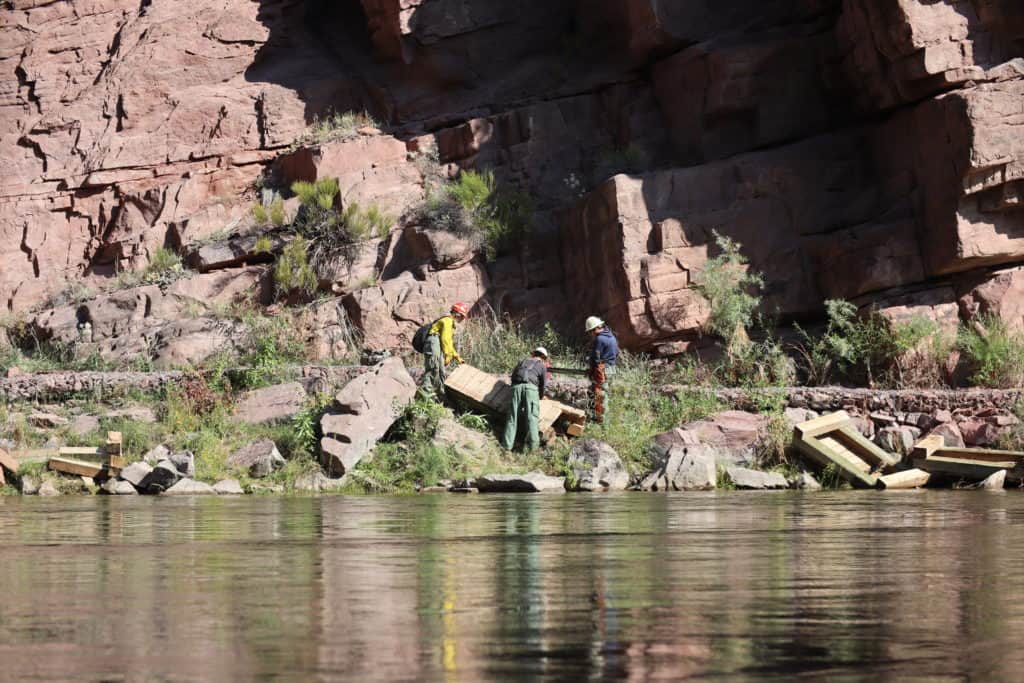

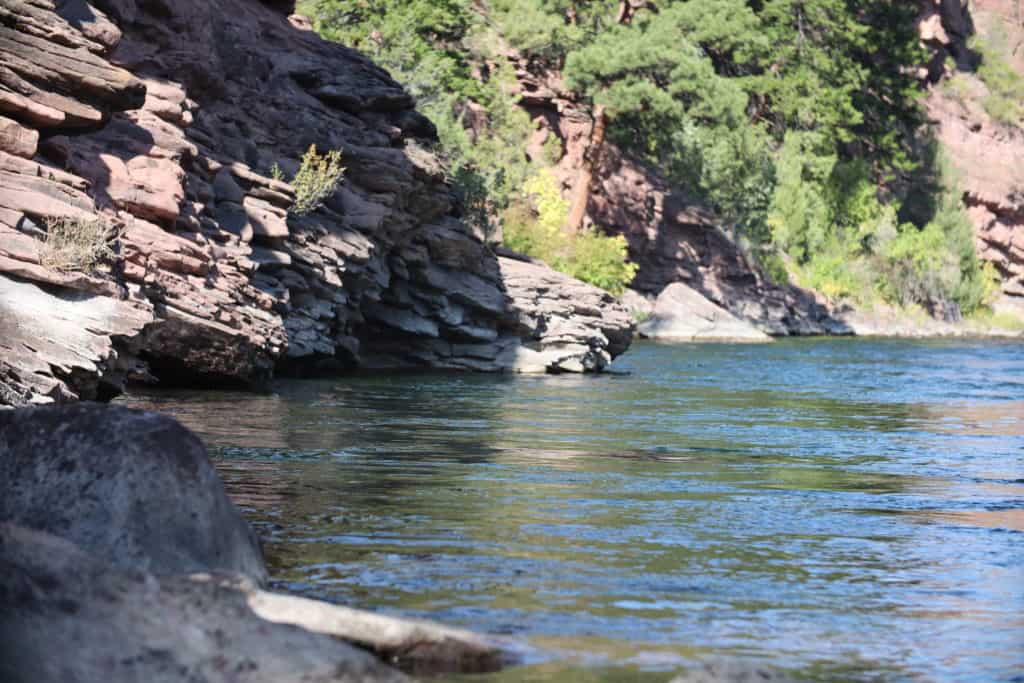
The B Section of the Green River starts approximately 7 or so miles down from the dam. This section of river arguably receives less fishing pressure than the A section. There are more native fish in B. On average, the B section produces slightly larger fish than you will catch in the A section. We used a 3 fly rig in this section. Our top fly was a large dry fly. We used two nymphs, positioned below the dry. Using the dry was a bit more challenging. You must ensure that the dry floats drag free. If your line goes tight, you aren’t going to catch the bigger fish. We were drifting down stream in the boat. That meant that we needed to pay particular attention to where we casted our flies. When the boat was headed straight down the stream, we casted towards the banks, working to land the fly just in front of the boat. We then attempted to mend our lines to keep the flies drifting with the boat. When the guide turned the boat horizontal in the river, we had to cast directly in front of the boat, adding slack to our line so that it floated well in front of the boat and free from drag.
We caught big fish near the bank. We caught big fish just below rapids. There may not be as many fish per mile in B section as their is in A, but we never got bored. The fish in B were hitting our nymph droppers most of the day. On this day, just a hand full of larger fish attacked the dry fly. Even though we didn’t take fish on the dry, that dry fly ended up being a useful strike indicator. When these Green River trout hit, you have to set the hook quickly. They generally ran directly at the boat, each time we set the hook. Meaning, you had to set the hook and be prepared to quickly strip more line to keep pressure on the fish. These are smart, savvy trout. They fight like crazy when you hook them. You may want to use athletic tape of wear some fishing gloves, because these fish will go on runs away from the boat. Stripping line right through your finger or fingers you are using in your pole hand. When they run, they really go. That line will slide across your fingers, and eventually start to cut into your fingers. Nice problem to have right. Buy some Simms gloves. That will solve that problem.
The poles we used on this trip were perfect for this river. My friend used a 5wt, 9ft Orvis Clearwater Fly Rod. He paired a nice Orvis Clearwater reel with his pole. I used a 5wt, 9ft Scott Fly Rod and choose a Ross Animas reel for this trip. Both poles worked flawlessly. I really enjoyed casting with my Scott fly rod. I was able to land the flies pretty much where I wanted to. The wind picked up later on day 2 and I did have a few miss casts while throwing directly into the wind. Highly recommend both of these poles for the Green River.
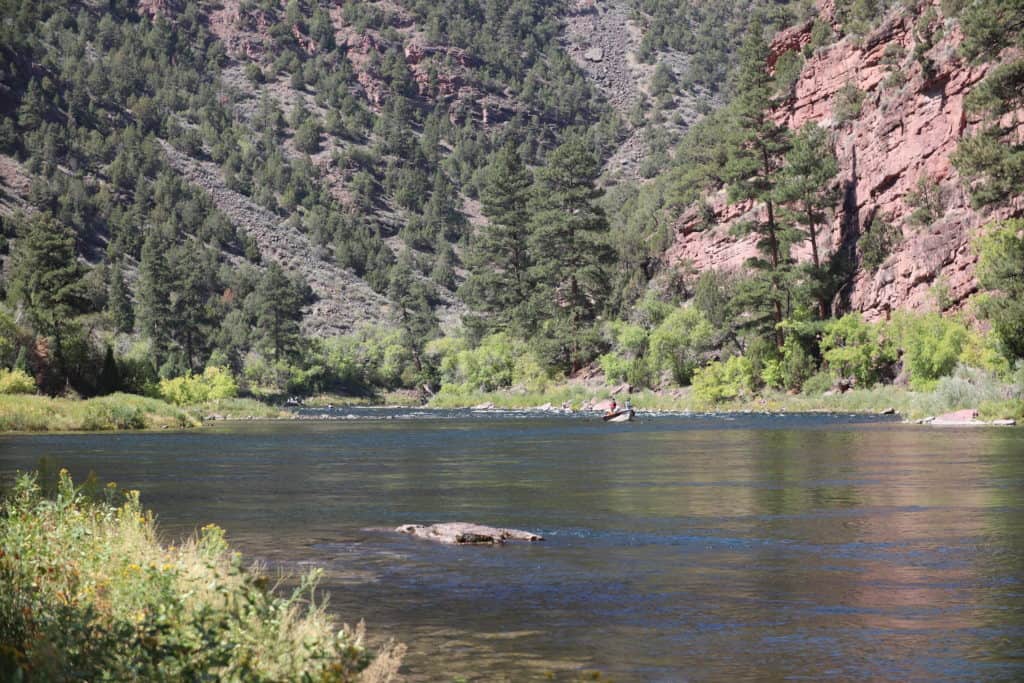
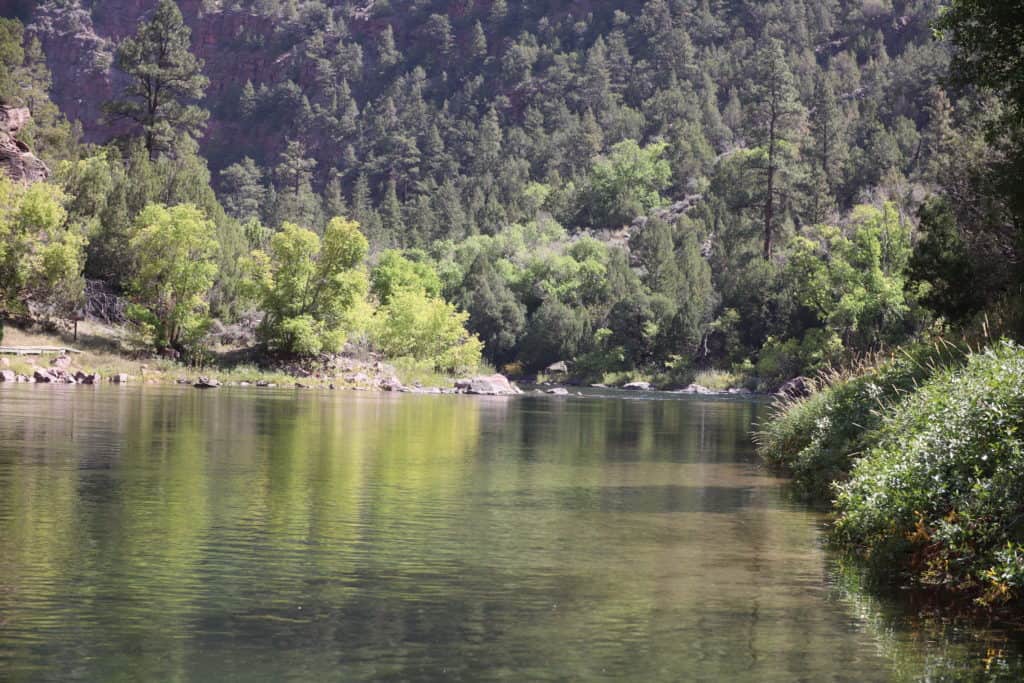
The C section of the river starts about 14 to 15 miles down from the dam. This piece of the river holds some monsters. There are lots of native brown, rainbow and even some cutties. The day we fished the C section, we used a 3 fly rig. The top fly was a large dry fly, with a red worm as our second fly, followed by a small grey nymph dropper at the end of our rig. Depending on the time of year you are fishing the Green, dry flies can be really productive. On this trip, we fished the river in mid September. The dry fly drew a few strikes. All of the trout we caught in section B and C hit the worm, or the grey nymph. The fish we caught in sections B and C were consistently 20 inches, with a couple being even longer. What was really impressive was the girth of the fish we caught. These were some really big, thick, healthy fish.
The Green River flows from Utah to Colorado. The fishing is really good in the A, B and C sections of the river. They say that fishing is still really good even 30 miles below the dam. By the way, we plan to add these and many more great photos from the trip to www.FlylineImages.com in the days to come. You can purchase these and many other beautiful photos at Flyline Images.


